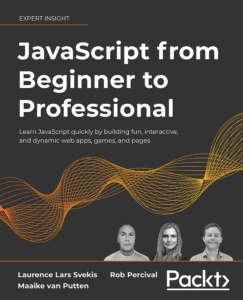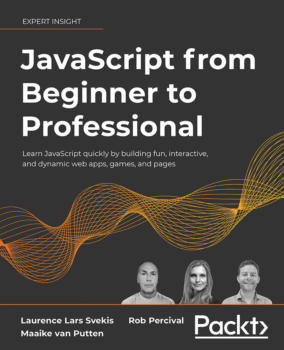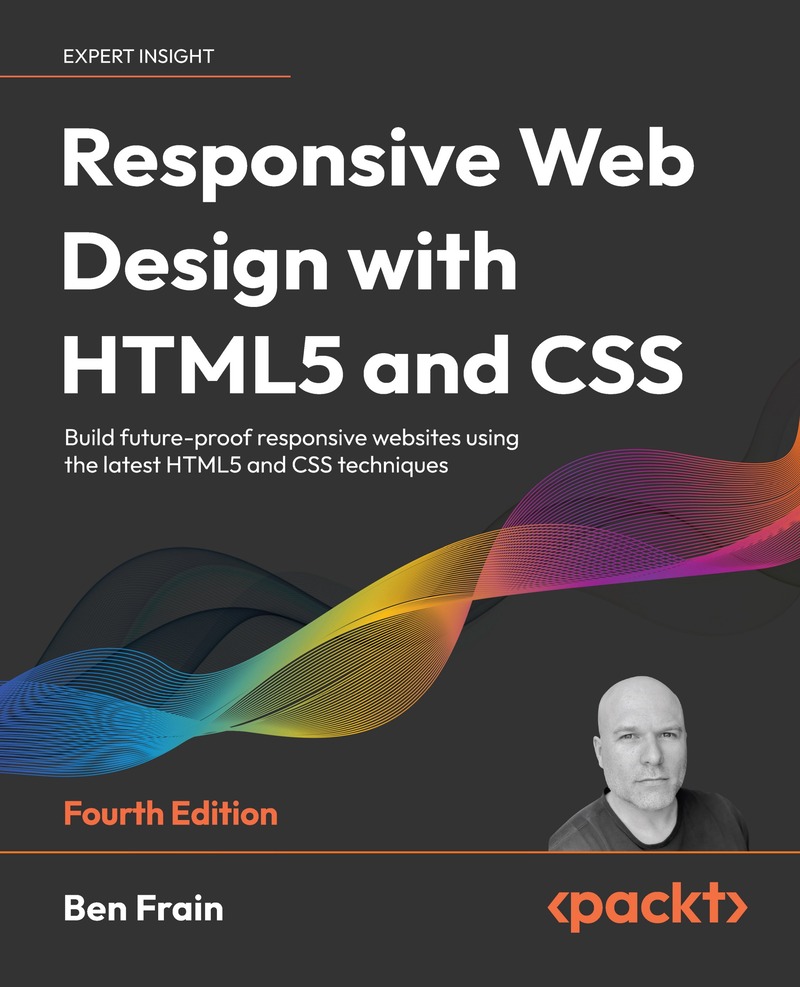JavaScript from Beginner to Professional Book In-Depth Overview/Review
Introduction
Why should you care now? As the web continues to evolve, demand for developers who can write clean, efficient JavaScript remains high. Whether you’re starting from scratch or brushing up your skills, JavaScript from Beginner to Professional offers a hands-on roadmap to closing the gap between knowing syntax and building interactive, real applications.
This article is for you if you are:
- A complete beginner in JavaScript
- Someone who knows HTML & CSS and wants to add JS power
- A junior or intermediate developer wanting to solidify fundamentals and work on real projects
- A student preparing for web dev roles, or self-learner looking for structured guidance
In this review, you will gain:
- Clear understanding of what this book teaches and why it’s relevant in 2025
- Practical takeaways and exercises you can start right away
- An 8-week study plan to structure your growth using this book
- Honest assessment: strengths, limitations, and who it best serves
About the Book

JavaScript from Beginner to Professional (Packt, 2021) is a project-based educational resource designed to take someone with little or no JavaScript knowledge through progressively more advanced topics. The premise is that you don’t just read theory, you build things: apps, simple games, animations, and interactive pages.
The book starts with the basics: what JavaScript is, how the browser interprets JS, writing scripts, using the console, embedding JS into HTML. It hands you the tools: variables, data types, operators. Then it moves to multiple values: arrays, objects, working with these data structures, multidimensional arrays. It covers logic: conditionals like if, switch, ternary operators; loops including for, while, nested loops; then functions (basic, recursive, nested, anonymous), classes & prototypes for object-oriented programming.
After building core programming skills, the book advances to built-in methods (strings, arrays, date, math), DOM / BOM, event listeners, interactive content, drag-and-drop, form handling. Then concurrency: callbacks, promises, async/await, the event loop. Also HTML5 Canvas, geolocation, media, drawing with mouse, reading local files, all to show how JS works in real browser contexts. Finally, it ends with “Next Steps” – libraries, frameworks, backend, so readers can see paths forward.
Why it matters today:
- Many courses or tutorials skip from basics to frameworks, but real understanding of vanilla JS, DOM, async programming is foundational.
- With JS everywhere (front-end frameworks, Node.js, serverless, mobile, etc.), knowing what’s under the hood helps debugging, performance, and future learning.
- The book’s project-based style helps retention; you learn by doing.
Book Details
| Title | JavaScript from Beginner to Professional: Learn JavaScript quickly by building fun, interactive, and dynamic web apps, games, and pages |
| Author(s) | Laurence Lars Svekis; Rob Percival; Maaike van Putten; Codestars by Rob Percival |
| Publisher | Packt Publishing Ltd |
| Year | 2021 |
| Edition | 1st edition |
| Pages | 546 |
| ISBNs | Print ISBN-13: 978-1800562523; eBook ISBN-13: 978-1800566774 |
| Formats | Print; eBook / eText / Reflowable layout |
| File Size | Not specified |
| Language | English |
| Official URL | Book on Packt |
About the Author(s)
Laurence Lars Svekis
Laurence Svekis is a seasoned web application developer, educator, and Google Developer Expert (GDE). He has worked on many enterprise-level applications, hundreds of websites, and business solutions. He first wrote computer applications in the early 1990s, launched his first website in 1998, and has been teaching and writing courses and content since the mid-2000s. He is recognized by Google for his contributions, having many students worldwide. Other works include multiple online courses in JavaScript and web development. [LINKEDIN]
Rob Percival
Rob Percival is a prolific online instructor with over 1.7 million students. Known for his comprehensive web and mobile development courses. Brings extensive experience in practical teaching. [LINKEDIN]
Maaike van Putten
Maaike van Putten is a software developer and trainer, teaching via platforms like LinkedIn Learning, Udemy etc. Passionate about helping learners at various levels. [LINKEDIN]
Table of Contents (TOC)
- Getting Started with JavaScript
Intro to JS, setup, console, embedding JS in HTML. Foundational first step. - JavaScript Essentials
Variables, primitives, data types, operators. Core building blocks. - JavaScript Multiple Values
Arrays, objects, multidimensional arrays: handling structured data. - Logic Statements
Conditionals, switch, ternary: decision-making in code. - Loops
Iteration: loops over arrays/objects; nested loops; break/continue. - Functions
Function definitions, recursion, anonymous functions, scope. - Classes
OOP in JS: classes, inheritance, prototypes. - Built-In JavaScript Methods
String, Array, Number, Date, Math methods for robust code. - The Document Object Model (DOM)
How HTML/CSS & JS interact; DOM basics & crash course. - Dynamic Element Manipulation Using the DOM
Modify page content: style, attributes, creating elements. - Interactive Content and Event Listeners
Mouse, keyboard, form events; handling interactivity. - Intermediate JavaScript
Regular expressions, debugging, JSON, local storage etc. - Concurrency
Callbacks, promises, async/await & event loop. - HTML5, Canvas, and JavaScript
Drawing, media, file reader, geolocation, canvas work. - Next Steps
Frameworks, backend, what to learn after mastering vanilla JS. - Other Books You May Enjoy
- Index
Key Highlights
- Strong foundation in vanilla JavaScript
Before moving to frameworks, understanding basics (variables, scope, prototypes) is essential. Exercise: build small utility functions manually. - DOM & event-driven programming
Interactivity (form, mouse, key events) is what lets users engage. Exercise: build to-do list app with add/edit/delete. - Concurrency & async workflows
Handling asynchronous data, promises, event loop is core. Exercise: fetch API data and handle the workflow with error states. - Projects & creative practice
Each chapter includes projects; applying skills helps internalize. Exercise: take a project and extend features or add polish. - Bridging to real-world frameworks / next-level skills
Book guides learners where to go after JS basics. Exercise: pick a framework and compare its abstractions to vanilla JS.
Expert Review
Strengths
- Very comprehensive coverage, from basics through intermediate/advanced topics.
- Project-based structure with hands-on exercises.
- Clear, logical progression of topics.
- Covers both synchronous and asynchronous JS.
- Includes creative, visual parts like Canvas and interactivity.
- Helps build confidence to move into frameworks/libraries.
Weaknesses / Limitations
- Some HTML/CSS familiarity expected; absolute beginners may find pace brisk at times.
- Modern toolchains, module bundlers, testing frameworks likely lightly covered or missing.
- Performance, browser compatibility, deep UX design, and accessibility may not be fully addressed.
- Limited coverage of backend or server-side JS topics.
Star Ratings
| Aspect | Rating | Justification |
|---|---|---|
| Content Depth | 4/5 | Covers broad topics; some depth trade-offs. |
| Practicality | 5/5 | Projects and exercises make learning actionable. |
| Readability | 4.5/5 | Clear explanations, beginner-friendly pace. |
| Value-for-money | 4/5 | Strong content for the price; some topics need supplementation. |
Who will struggle with this book and why
- Those with zero computing or programming background may need more gentle introductions.
- People expecting deep tooling, testing, build pipelines might find content thin in those areas.
- Backend-focused developers may need other resources for server side or Node.js specifics.
- Designers or UX experts expecting heavy focus on UI/UX or accessibility may need additional reading.
Who Should Read This Book?
- Absolute Beginner Student: Builds foundation; focus Chapters 1–6.
- Junior Front-end Developer: Fill gaps; focus Chapters 9-13.
- Career Switcher: Full book, projects + Next Steps.
- Educator / Bootcamp Instructor: Use project chapters as assignments.
- Self-learner / Hobbyist: Choose parts; practice at own pace.
- UX / UI Designer wanting interactivity: DOM, Canvas, events chapters.
- Backend / Node.js Developer wanting front-end clarity: likewise DOM, async, built-in methods.
- Tester / QA Engineer: debugging, event loop, error handling focus.
Related Resources / Books
- Responsive Web Design with HTML5 and CSS by Ben Frain: Build Future-Proof Responsive Websites
- Linux for System Administrators Free Download
FAQs
Is *JavaScript from Beginner to Professional* suitable for total beginners? Yes. It starts from very basics: setting up environment, what JavaScript is, how browsers interpret it. Some comfort with HTML/CSS helps, but no prior JS required. What prerequisites do I need before starting this book? Basic familiarity with HTML and CSS helps. General computer literacy, willingness to practice and code. No prior advanced JS or framework knowledge required. Will this book teach modern JS features like async/await and promises? Yes. Concurrency chapter covers callbacks, promises, async/await, and the event loop in modern JavaScript. Do I need any specific tools or editor to follow along? No heavy tools required. A web browser with developer console, any code editor (e.g. VS Code, Sublime), optionally Node.js if you want to experiment. For project parts like Canvas etc., just browser support. Are there downloadable code or lab assets to practice? The book’s publishers (Packt) usually provide code assets or repositories. (If not already, or if access fee applies, check publisher site.) How does this book compare to online courses or tutorials for JS? Sometimes online courses move very fast or omit depth; this book gives structured coverage, reinforcement with exercises, projects in browser context. It’s slower but more thorough. Will this book help me transition into frameworks like React or Angular? Yes, indirectly. It builds the required foundation: understanding of classes, functions, asynchronous behavior, DOM and events. Once you grasp these, moving to frameworks is easier. Is the content up to date with modern browser JS features and best practices? As of 2021, yes. The book includes modern features including strict mode, async/await, modern built-in methods, classes. But for the very latest APIs (e.g. bleeding edge or experimental), supplement from recent online docs/posts. Can I use this book for job interview preparation? Yes. Many interview questions focus on logic, scopes, closures, async behavior; this book’s content covers all these. Doing the exercises and projects gives you concrete examples to discuss. What languages/frameworks does this book not cover in depth? It is not a framework tutorial (React, Angular, Vue), nor is there deep focus on TypeScript, module bundlers, testing frameworks, or backend server technologies. You will likely need other resources for those.
Download
Download — Practical Threat Detection Engineering (PDF)
Format: PDF (eBook)
File size: varies by edition
Short disclaimer:
This download is presented for educational purposes only. Always support the author and publisher by purchasing the official edition if you find the material useful. Unauthorized distribution or piracy harms authors and the community.
Legal Disclaimer: This article is for educational purposes only. Always use officially-licensed copies of books. Authors, publishers deserve support for their work.
Download the Code
The book’s code assets are typically made available via the publisher (Packt) or accompanying GitHub / repository. I did not find a verified public repo link in my lookup. If you locate one, you can clone or download as follows:
Repo link: [link to official repo].
Actionable Study Plan / Curriculum (8-Week Plan)
| Week | Learning Goals | Daily Tasks / Exercises | Deliverable |
|---|---|---|---|
| Week 1 | Set up environment; get fluent with basic JS syntax, variables, data types, operators | Day 1: read Getting Started chapter; Day 2: practice console + browser embedding; Days 3-4: do exercises from JavaScript Essentials; Day 5: small script using variables/operators; Days 6-7: review & quiz | Script taking user input and processing types / sum etc. |
| Week 2 | Work with arrays, objects, multidimensional arrays | Read Multiple Values; do projects; build data model (JSON users) | Web page listing/filtering items. |
| Week 3 | Conditionals and loops | Practice logic statements and loops; nested; break/continue; apply to previous week’s data | Quiz or game using loops/conditions (Hangman etc.). |
| Week 4 | Functions, scope, recursion, anonymous functions | Study Functions; write recursion; explore scope; anonymous functions | Utility library with multiple functions. |
| Week 5 | Classes, built-in methods | Read Classes + Built-In Methods; use String, Array, Date, Math; build class hierarchy | Small class-based app for managing data (books, tasks etc.). |
| Week 6 | DOM, events, interactivity | Work through DOM and events chapters; build interactive elements; forms; animations | Interactive page (to-do or drawing app). |
| Week 7 | Intermediate JS, Concurrency, Async | Intermediate JS & Concurrency chapters; practice JSON/local storage; fetch API; error handling | App fetching data with loading/error handling. |
| Week 8 | Canvas, media, Next Steps & personal project | Canvas, geolocation, media chapters; plan and build a blended project | Polished integrated project; reflect on learning journey. |
Conclusion
JavaScript from Beginner to Professional delivers a comprehensive, hands-on pathway from zero or minimal JS knowledge to being ready for building interactive web apps and games. It shines in its project-based approach, clear explanations, and coverage of modern essential topics like DOM, async code, and interactivity. If you’re serious about mastering vanilla JavaScript (before or along with frameworks), this book provides excellent value.
If you match one of the personas above (student, junior dev, career switcher, etc.), this book is likely to accelerate your learning. Next steps: acquire the book, follow the 8-week plan above, build projects, revisit weak spots, and then move on to frameworks or advanced tools.
Was this article helpful?
Loved it? Share your thoughts with a quick comment, submit recommendations and suggestions or leave a star rating in comments!
Free Download





